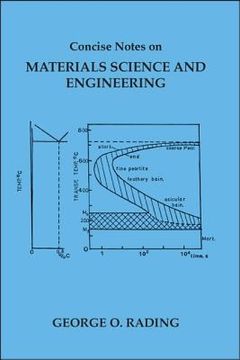Synopsis "Concise Notes on Materials Science and Engineering (in English)"
This book presents in a very concise form the entire undergraduate syllabus in the subject of materials science as specified by most Universities for students studying for degree courses in mechanical, production and materials engineering. No existing text adequately covers the breadth and depth as required by the syllabus. Moreover, the subject matter falls into two distinct categories: the phenomenological and the mechanistic. Available textbooks that give excellent treatment to one category of topics inevitably give only a superficial treatment to the other category. The Author seeks to bridge this gap, while offering students an affordable revision text. Materials science concerns itself with relating the internal structure of a material to its properties, and further seeks to enable the engineer to arrive at a defined set of properties through manipulation of this internal structure. This book has been arranged with this need in mind. Thus, the first three chapters deal with the internal structure of the three primary classes of materials i.e., metals, polymers and ceramics. The next chapter deals with the mechanical properties. The following chapter is on "equilibrium diagrams" that is necessary for the understanding of metallic alloy systems. In the next three chapters the properties of iron, aluminium, copper and titanium based alloys are explained and ways of improving the said properties (alloying, heat treatment, and processing) expounded on. In the following three chapters, attention is focused on the more specialized material properties i.e., fatigue, creep and fracture. Polymers, ceramics and composites are then considered. In all cases, the internal structures are considered followed by the properties and finally some brief mention of the major processing methods for each group. Finally, some aspects of surface stability are touched on in the chapter on corrosion and degradation of materials. Throughout this book, illustrations have been used liberally to help amplify the theory. Where applicable, worked examples of numerical problems have been provided. At the end of each chapter, un-worked problems are given (with answers to numerical problems). These questions are adopted mainly from past University examination papers. Two or three books recommended for further reading on each topic are given at the end of each chapter.

